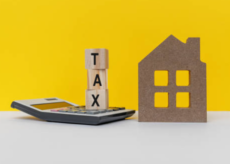Annual Percentage Rate (APR): Calculation, Basics & Types
If you have credit cards or have taken loan to get your new house or renovation or buying a car, you are paying interest on that money with a certain percentage a year to the lender. This is called an APR, or annual percentage rate.
Cost of borrowing money is called as Finance Charge (APR)
It only takes a few minutes to calculate the APR on your credit cards if you know the basics and know a little algebra. Mortgage APRs are calculated differently because they include additional fees to insure your loan. You’ll learn how to get several here.
Understanding APR
Remember that it costs money to borrow money. If you’re using a credit card or taking out a home mortgage, you may have to use more money than you currently have. If you get a loan, the lenders who gave you the loan will expect you to pay them the amount borrowed plus a fee for lending you the money. This finance charge is called an APR.
The APR can be divided into monthly and daily interest payments. The APR is the annual rate you pay for a credit or loan.
For example, if you borrow $1,000 and the APR is 10%, at the end of the year you will owe $100, or 10% of the $1,000.
Monthly Rate: But lenders can change that number and charge monthly. If you want to know the monthly periodic rate, just divide your APR by 12.
10% ÷ 12 = .83%. Each month the interest will be .83%.
Daily Rate: Lenders will also be able to modify the APR in order to collect it on a daily basis. If you want to know the daily periodic rate, just divide the APR by 365.
10% ÷ 365 = .02%. Every day your interest rate will be .02%.
Types of APR
There are three types – fixed, variable and tiered.
Fixed APRs remain constant throughout the life of the loan or credit card.
Variable APRs can fluctuate daily, leaving the borrower wondering how much interest they are paying.
Tiered APRs is another type of APR that can vary depending on the debt the debt is owed.
It should be clear that the average APR is about 14%. It’s not an insignificant amount, especially if you can’t pay it quickly. Average fixed rates are slightly below 14% while variables are slightly above 14%.
Remember that you will not be charged the APR if you pay your monthly bills on time. If you spend $500 on your credit card but pay off the balance by the due date, the APR will not be calculated. To avoid paying interest and have a better credit history, make your monthly payments on time.



